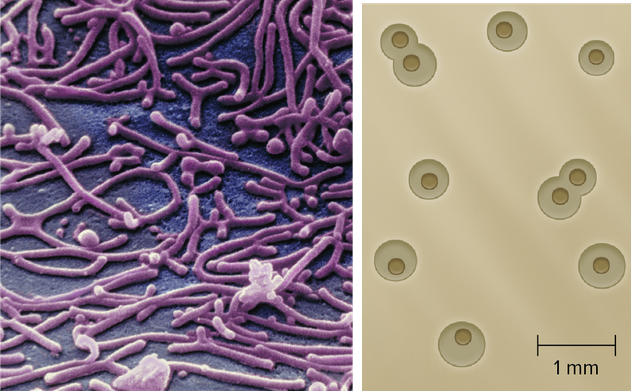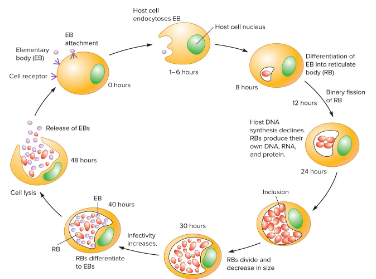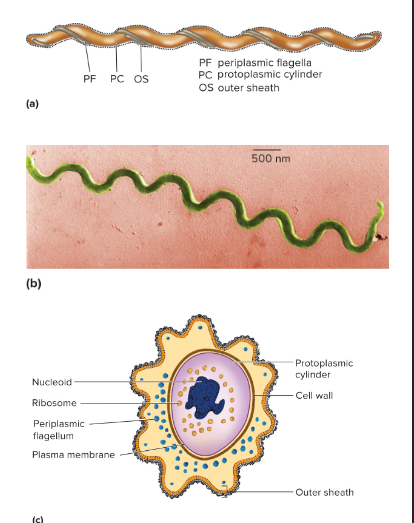Nonproteo Gram-Negative Bacteria & Archaea Chapter 15 &16 - BIOL 3340
1/12
Earn XP
Description and Tags
Chapter 15 & 16 study guide for Microbiology.
Name | Mastery | Learn | Test | Matching | Spaced |
|---|
No study sessions yet.
13 Terms
Thermotoga
Genus of gram-negative, chemoorganotrophic, rod-shaped bacteria with an outer sheath-like envelope that balloons out from the ends of the cell.
Thermophilic (optimum 80 C maximum 90 C).
Have a functional glycolytic pathway and can grow anaerobically.
Thermus aquaticus
Thermophilic (optimum 70 C) bacteria that is resistant to oxidative stress, desiccation, and radiation. Can survive 3-5 million rad. Possesses thermostable DNA polymerase (Taq).

Mycoplasmas
AKA Mollicutes.
Pleomorphic bacteria that lack cell walls. Smallest bacteria capable of self-reproduction.
Cannot synthesize their own peptidoglycan precursors.
Fried egg appearance on agar.
Mycoplasma pneumoniae
Causative agent of atypical pneumonia in humans.
Chlamydiae
A phylum of Gram-negative obligate intracellular parasites. Best studied genus is Chlamydia.

Chlamydia
Nonmotile, coccoid, Gram-negative bacteria with very small genomes and no peptidoglycan in their cell walls.
Reproduce when an elementary body attaches to a host cell and produces a reticulate body via binary fission. The RBs then differentiate into EBs and lyse the host cell.

Spirochetes
Phylum of Gram-negative, chemoheterotrophic bacteria with a flexible helical shape.
Possess creeping (motility) due to the axial filament (motile by the rotation of the periplasmic flagella).
Symbiotic relationships with termites, mollusks, mammals, and oral cavities of animals.
Diseases include Lyme disease and syphilis.
Borrelia burgdorferi
Gram-negative spirochete that is the causative agent of Lyme disease.
Treponema pallidum
Spirochete bacteria that is the causative agent of syphilis.
Bacteroidetes
An extremely diverse phylum of chemoheterotrophic bacteria that are common in terrestial and marine environments as well as sewage treatment plants.
Includes genera Bacteroides.
Lokiarchaeota
Phylum of archaea that is part of the superphylum Asgardarchaeota. Close relative of eukaryotes.
Encodes for a significant number of eukaryotic signature proteins: cytoskeletal components, informational processing proteins, and components of the intracellular trafficking and secretion pathways.
Sulfolobus
Genus of irregularly lobed, spherical shaped archaea that are thermoacidophiles (cell walls contain lipoproteins and carbohydrates).
Have lithotrophic metabolism on sulfur (use O2 or ferric iron as the electron acceptor) and organotrophic on sugars and amino acids.
Thaumarchaeota
Phylum of mesophilic ammonia oxidizers. Possess a unique membrane lipid called thaumarchaeol.
Capable of nitrification. Dominant maker of vitamin B12.